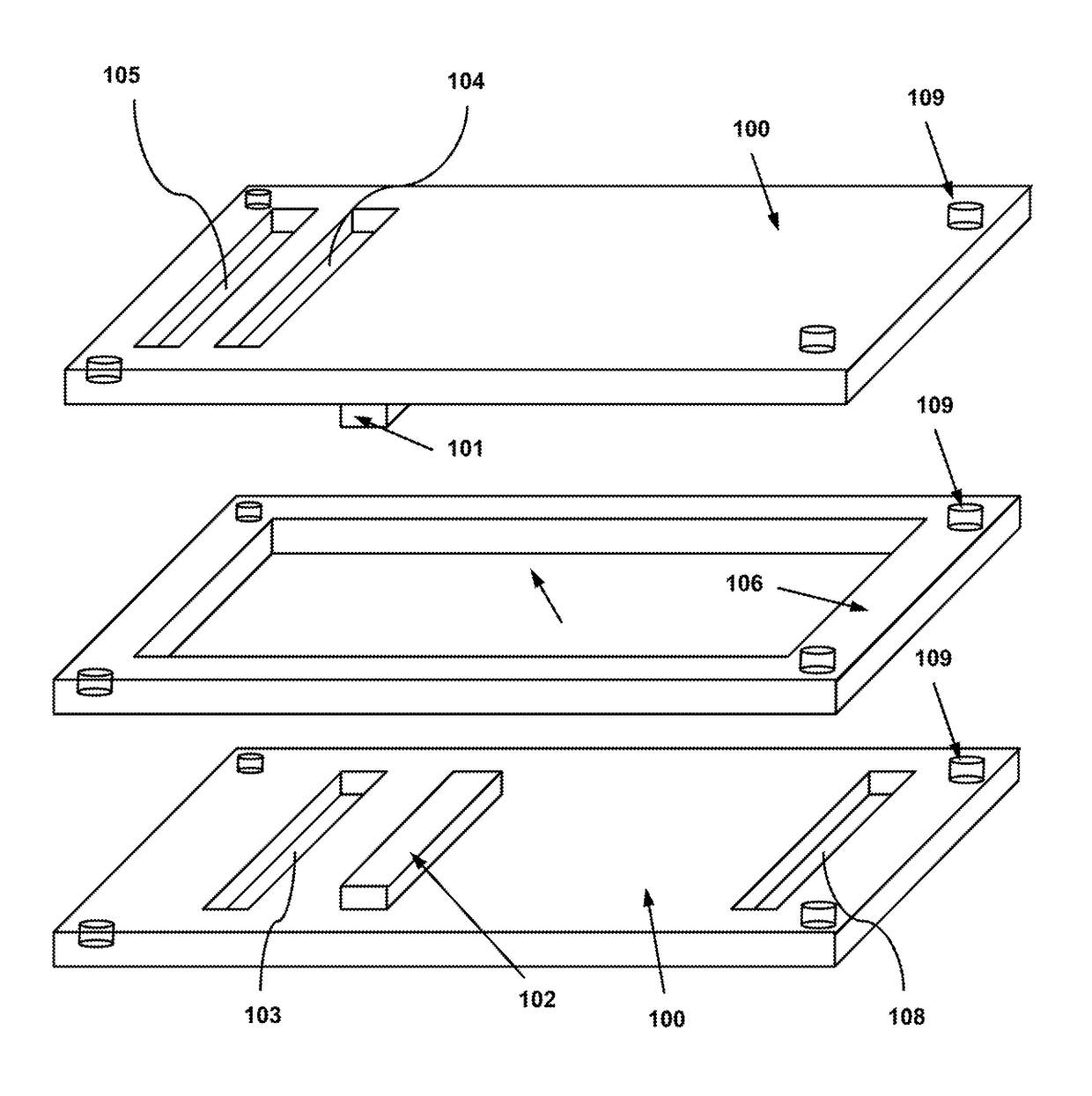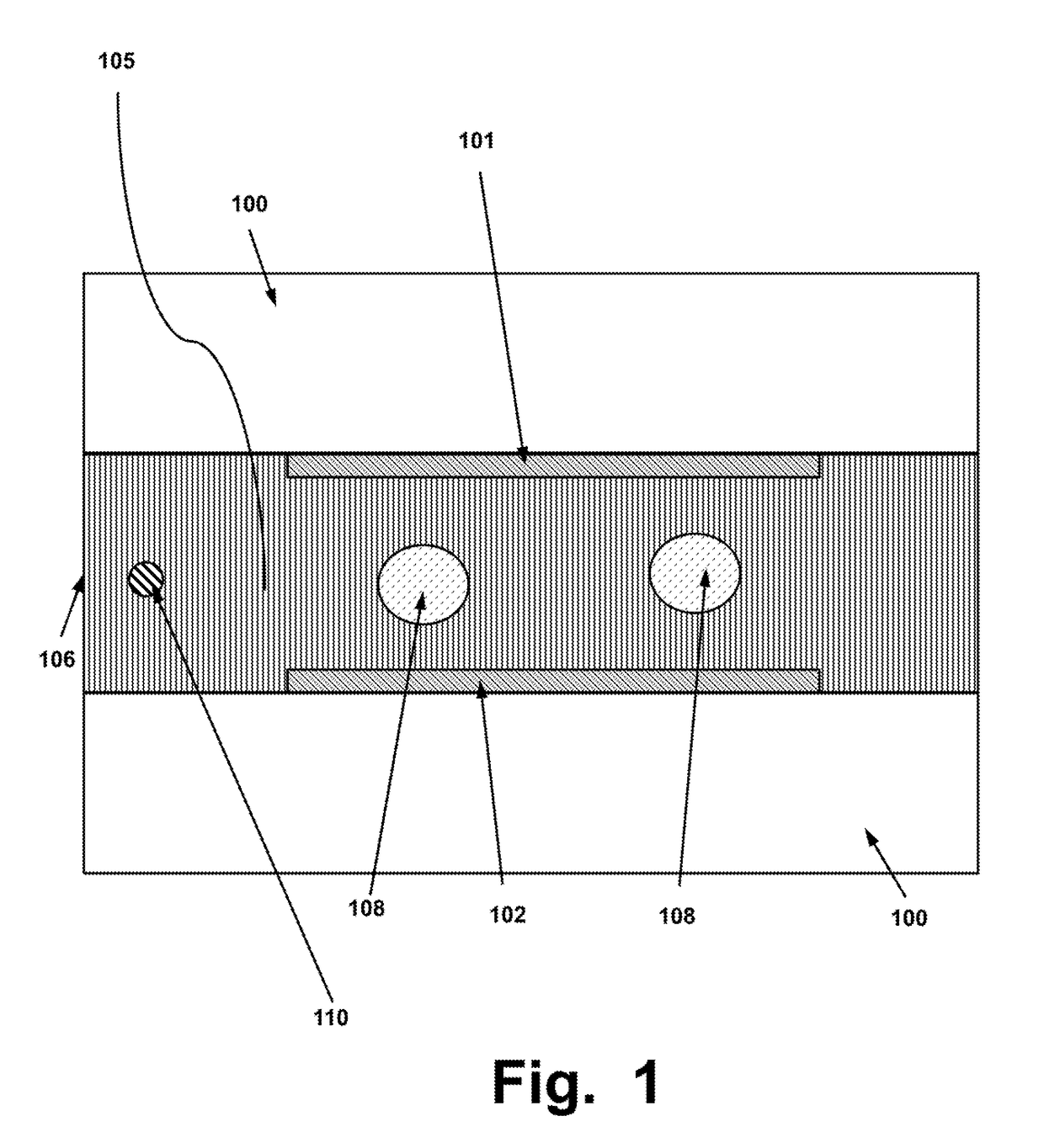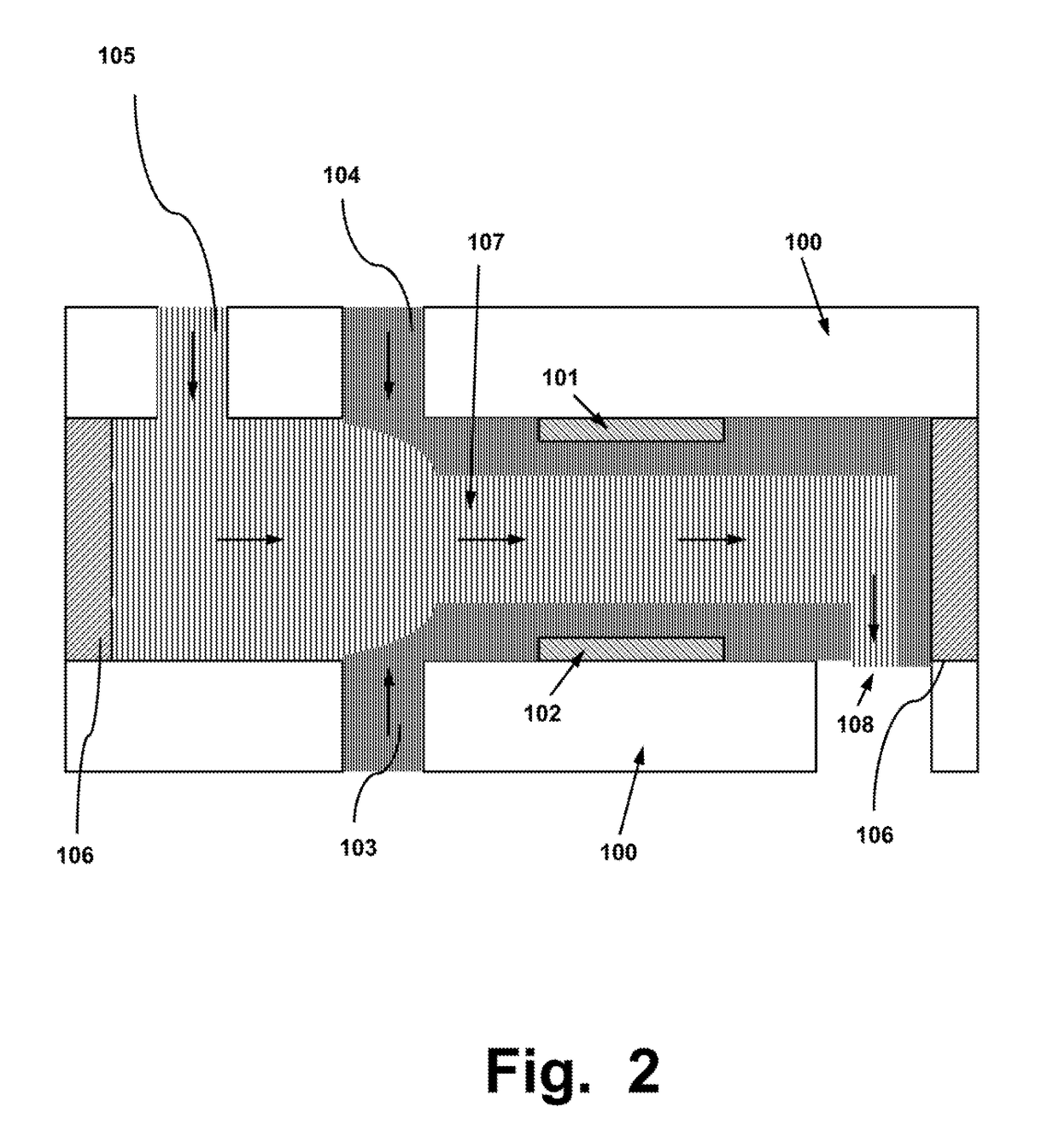System, Device and Method for Electroporation of Cells
a cell and electroporation technology, applied in the field of molecular biology, can solve the problems of negative consequences for the health of the cell, limited current devices, and inefficient transfer of biologically active molecules
- Summary
- Abstract
- Description
- Claims
- Application Information
AI Technical Summary
Benefits of technology
Problems solved by technology
Method used
Image
Examples
example 1
ration of Mammalian Cells with a DNA Plasmid
[0064]This example describes an embodiment where the flow electroporation device is used to electroporate mammalian cells with a DNA plasmid. Chinese hamster ovary (CHO-K1) cells (ATCC) are electroporated with a plasmid that expresses green fluorescent protein using the flow-through electroporation device described. Cell viability can be determined based on the uptake of propidium iodide. The electroporation efficiency can be determined using fluorescent observation of the number of cells that express the green fluorescent protein relative to the total number of cells.
[0065]The cells are cultured in an incubator at 37° C. and 5% CO2. The cells can be cultured in a synthetic medium, such as Dulbecco's modified Eagle's Minimum Essential Medium (DMEM, Sigma, St. Louis, Mo.) supplemented with 10% fetal bovine serum (Sigma) and 100 mg / mL streptomycin (Sigma). When the cell suspension density reaches a certain value, for example, 2×106 cells / mL,...
PUM
| Property | Measurement | Unit |
|---|---|---|
| distance | aaaaa | aaaaa |
| distance | aaaaa | aaaaa |
| distance | aaaaa | aaaaa |
Abstract
Description
Claims
Application Information
 Login to View More
Login to View More - R&D
- Intellectual Property
- Life Sciences
- Materials
- Tech Scout
- Unparalleled Data Quality
- Higher Quality Content
- 60% Fewer Hallucinations
Browse by: Latest US Patents, China's latest patents, Technical Efficacy Thesaurus, Application Domain, Technology Topic, Popular Technical Reports.
© 2025 PatSnap. All rights reserved.Legal|Privacy policy|Modern Slavery Act Transparency Statement|Sitemap|About US| Contact US: help@patsnap.com



